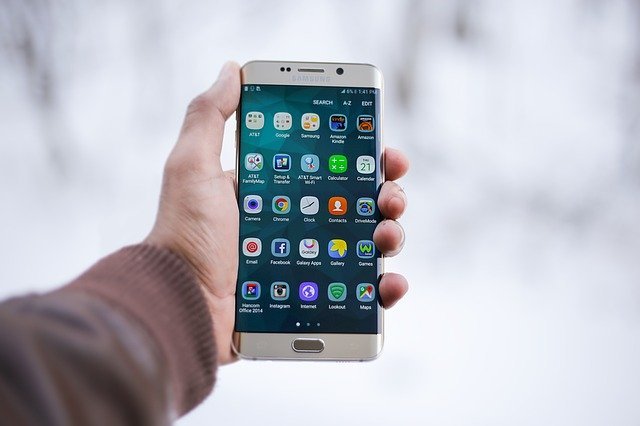The history and development of mobile

The history and development of mobile
Mobile phone is one of the biggest needs of every person nowadays, it has become so difficult that we can not live even a single moment without our mobile phone. We rely on smartphones for almost all of our work. These cell phones or smartphones that we use today have appeared in the world about 20 years ago. While the history of the mobile phone and the development story is very interesting and full of information.
Earlier, you must have read an article on our blog about the history and evolution of computers, while some asked us to write about the history and development of mobile phones, so today we wrote this article to tell about it. Is written.
Cell phones or cell phones were actually made so that anyone could take them with them in the car as well. This is why they are also called car phones. If we talk about cell phones in previous times, they were very big, heavy and more expensive than the latest modern cell phones today.
Let us, through today’s article, we will get complete information about the history and development of mobile phones. Hope you like our effort so much, let’s get started then.
The history of the mobile phone – the history of the mobile phone
The mobile’s journey from being simple to smart has been really interesting. There have been many such changes in mobile phones that have been set up by making them a hub of information and communication , which is very fundamental when seeing today’s modern living conditions.
But how did these cell phones become so modern? For this, you will have to study this post “ Mobile History and Development ” very carefully so that you can know what changes have been made over time.
What was the world’s first mobile phone and when was it launched?
The world’s first mobile phone was the ” Motorola DynaTAC 800x ” and it was launched in 1983 . Its price at the time was around $4,000. At the same time, you can only talk for 30 minutes on this. Speaking of its size, it was up to one foot tall.
Despite its large size, it was considered the most mobile of the time. At the time this was a really big problem, we humans can talk wirelessly without any wires, also with the help of mobile phone.
History and development of mobile phones
Now let’s pay more attention to the history and development of mobile phone. I know how mobile technology has had to face so many changes in so many years.
1983 – 1990 (world’s first mobile phone)
In 1983, the world got its first handheld mobile phone named Motorola DynaTAC 8000X . Its cost was around $4,000 USD and at the time it was considered a status symbol.
Two years later the first phone call was made, which is also UK territory, this phone call was made to the head of Vodafone Sir Ernest Harrison. In 1989, Motorola also produced other models after the DynaTAC, which were the 9800X or MicroTAC.
It had a foldable keyboard cover, and it set the standard for a foldable phone throughout the ’90s.
Features:
Mobile calling
1991-1994 (Introduction of Consumer Devices)
GSM was first launched in Europe in 1991. It was first launched with Orbitel TPU 900 in the market, but until 1992, mobile phones were used only by businessmen, and since then they are now used by consumers as well.
At the same time, a significant decrease in its price was observed when mass production began, and people began to acquire cost-effective consumer devices with digital screens. Nokia snatched the first feature of this change, while Nokia 1011 was also launched in the same year.
Features :
SMS, Games
1995 – 1998 (mobile phones are getting hotter)
Although it only offered four colors, Siemens’ S10 gave life to the phone’s display in 1997. This is the same year that Hagenuk launched GlobalHandy, the first device without an external antenna.
This time there have also been a lot of customization changes, as Ericcson has started offering front-facing switchable color keyboards. The following year, Nokia launched a range of “Xpress-on” interchangeable covers in the 5100 series, making it the first fashion-oriented phone.
Features :
Mail, Vibration Alerts, Color Screen
1999-2002 (growth into flagship phone)
In 1999, Nokia released the 7110, which was the first device to use WAP (a means by which information is accessed over a mobile wireless network). Just a year later, Sharp launched the world’s first camera phone, the J-SH04.
Although it was only available in Japan at the time, its arrival gave an indication that people were inclined towards phone photography. The camera phone was only introduced in the western world, from 2002 when the Sony Ericsson T68i was released where the installed camera was used.
Features :
WAP, Tri-Band, Video Calls, GPS Navigation, Predictive Text, Camera, Polyphonic Ringtones, MP3 Player, Bluetooth, Memory Card, MMS
2003-2006 (Mobile Data Revolution)
With the 3G implementation, download speeds have increased significantly, reaching around 2MBS. In March 2003, the number “3” was the first to offer 3G service in the UK. RIM has brought mobile email to the masses with its line of popular BlackBerry devices such as the 8100 Pearl. In 2003, front cameras were introduced in devices such as the Sony Ericsson Z1010 that basically enabled video calls, but this feature was not popular at that time.
Features :
Realtone Ringtones, Augmented Reality, Wi-Fi, Quad-band, Water Resistant, Full Web Browsing
2007-2010 (Smarter)
Scrolling and swiping have replaced the traditional buttons method that was used for input. At this time, LG Prada became the first touch screen market, also before the Apple iPhone in May 2007. However, Apple has proven to be a stronger brand and superior knowledge, best at providing capacitive touch screen capabilities.
Features :
NFC, capacitive screen, mobile apps, wireless charging
2011-2014 (Life Companion)
Smartphones have become very popular and central to modern life, which offer more than just connectivity features. The UK’s first 4G service was launched by EE in about 11 cities in 2012, increasing download speeds to around 12Mbps.
Voice recognition became popular, first for Google Voice, and then for Apple’s Siri Market. Samsung then also added a built-in heart rate monitor to its flagship Galaxy S5 so they wanted to capitalize on their growth in health and fitness on mobile devices.
Features :
Voice Control, Dual Lens Camera, Face Recognition, Fingerprint Scanning, Full HD Display, Heart Rate Monitor
2015 – 2018 (size definitely matters)
As the global adoption of 4G started around the world, the video streaming and video calling capabilities also started to improve a lot. Screen sizes are slowly starting to grow so that all features can be experienced more.
The iPhone 7 Plus screen saw an increase of about 57% compared to the original iPhone 2007. Then mobile payments also appeared along with Apple Pay and Android Pay, which started offering the facility for users to buy that also using their smartphone.
Features :
Scanner, Apple & Android Pay, Bazel Less Screen, Notch, In-Display Fingerprint Scanner
present day
EE launched the UK’s first 5G service in 6 cities in May 2019. The 5G network promises to deliver ultra-fast data speeds and reliability, while simultaneously boosting HD video streaming and mobile gaming.
Phone design trends are also slowly starting to grow across the screen experience, while OnePlus has introduced a new pop-up selfie camera in its flagship 7 Pro.
Features :
Penta – Viewfinder
Mobile field main features
Now let’s take a look at those important milestones related to the field of mobile technology.
1973
The world’s first mobile phone call was made by Dr. Martin Cooper, a Motorola employee, in New York, so he used a prototype of the Dyna TAC phone. Cooper had given this phone to a friend who worked at his competitor, AT&T. At the time this phone weighed more than 1 kg and at the same time it took about 10 hours to charge it!
1979
Japan has always been at the forefront of technology, and in 1979 launched the first commercially available automated cellular network, but at the time it was only available in cars. which we know today as “1G”.
1981
Then 1G later reached Western countries, first Scandinavia and then the UK and North America.
1983
The world’s first mobile phone went on sale, the Motorola DynaTAC 8000X. It was very expensive, around $4,000 USD.
1985
Michael Harrison J was the first mobile phone caller in the UK. He made a phone call to his father, who was then president of Vodafone, Sir Ernest Harrison.
1989
Then the first real mobile phone came to the fore – the Motorola 9800X which features a flip-down that covers the keyboard.
1991
The GSM (Global System for Mobile Communications) phone was launched and 2G digital cellular networks completely replaced the 1G analog system. In the second generation, we got text messages, picture messages, and multimedia messages (MMS), so that people started communicating with each other in a whole new way.
1992
Neil Papworth sent the first text message to an Orbitel TPU 901 phone to Vodafone CEO Richard Jarvis. It was written “Happy Birthday!”.
1994
IBM released Simon which had a touch screen as well as a very early form of application. Its price was kept at $899 and only worked in 15 states of the US.
Nokia launched Europe Mean 2110, it was the smallest GSM phone available at the time and at the same time also got a choice of ringtones like Nokia Tune .
1996
The first phone that was also introduced to the market with a “sliding” form factor was the Nokia 8110. It was called the popular banana phone due to its shape. At the same time, she also appeared on the big screen in the movie Matrix. At the same time, this was the first device used to display a monochrome LCD.
Besides, Motorola StarTAC was also such a phone which was the first flip phone or clamshell device. Its popularity was so high, it sold about 60 million units worldwide.
1997
The iconic Snake game was launched in Nokia 6110 which marked the beginning of mobile gaming. Hagenuk GlobalHandy launched without any external antennas; Ericsson brings color keyboards to the world Siemens has unveiled its first color screen phone – the S10.
UK Mercury One2One started the first paid as you go service which was called ‘Up 2 You’. It used to allow customers to top up their calling credits and later became T-Mobile and then EE.
1998
Nokia launched the 5110 which became very popular in the consumer market and included replaceable panels (which Nokia described as ‘Xpress-on covers’) making it the first truly customizable phone.
1999
WAP was launched in the Nokia 7110, making it the first web-capable phone although it was a smaller version that did not provide the full HTML experience we know today.
2000
The Sharp J-SH04 became the first camera phone on the market, but it was only available in Japan. BlackBerry launched its 857 phone that supports email and web browsing. Which was referring to BlackBerry’s reign as the king of business phone. Nokia launched the most famous phone, the Nokia 3310, with about 126 million units sold.
2001
Color screen phones started appearing on the market, first based on the Mitsubishi Trium Eclipse but later with the Ericcson T68i.
Qwerty keyboards also appeared as the Nokia 5510. The 8310 has become the most popular phone thanks to its great design and advanced features including infrared, fully functional calendar and FM radio.
2002
The first camera phone was launched in Europe, the Nokia 7650 . T-Mobile has announced the UK’s first photo messaging service which was only available on the Sony Ericsson T68i.
People are used to getting this in the 7560 0.3MP sensor which can do color photography from 640 x 480 pixels.
2003
It became the best-selling phone of the Finnish giant Nokia 1100, which was so famous that it sold more than 200 million units in a very short time.
3G networks were introduced all over the world, which provided data transmission speeds about three to ten times higher than 2G. With this, users can now easily watch videos, while simultaneously participating in video conferencing and using location-based services for the first time.
2004
Motorola launched the Razr V3 – a very popular “fashion” phone, between 2004 and 2006. It sold around 130 million units and prepared designers for futuristic stylish designs for the times to come.
2005
Android, this mobile operating system was acquired by Google, which showed that this Mountain View giant is very dangerous in terms of mobile technology.
Casio G’zOne became the world’s first waterproof phone, which also started a new movement towards phones that started getting IP certifications.
2006
Nokia N95 was launched which for the first time brought a true smartphone experience to people. It worked on Symbian OS, it has 160MB of RAM, the world’s first 5MP camera phone, Bluetooth and Wi-Fi.
2007
Launched in June 2007, the first generation of the iPhone was introduced by Steve Jobs and featured an auto-rotate sensor, and a capacitive screen that allowed multiple inputs while ignoring simple touches. Within a few gaps, this phone was a huge hit.
2008
The world’s first Android phone was released which was called G1. It had a limited touch screen and a slide-out keyboard. At the same time, Microsoft also created its own mobile operating system “Windows Phone”, with which it now wants to compete with Android and iOS. Apple launched its own App Store, where about 552 apps were available to download.
2009
WhatsApp was launched, and its founder, Jan Kum Kum, came up with the idea of a messaging app during a movie night at a friend’s house.
Sweden and Norway TeliaSonera became the first operator that used to provide 4G services to customers. In practice, with the advent of 4G, there were almost five times more data transmission speeds compared to 3G networks.
2010
Apple launched the iPhone 4 but it suffered a lot due to antenna problems. Google has finally released a branded smartphone – which is called the Nexus One.
2011
Samsung has carved out its own niche as a global smartphone seller, which hasn’t helped much with its Galaxy S II model, as users get an 8-megapixel camera and AMOLED display.
2012
For the first time in five years, when the iPhone began to be available in the market, this fifth generation model was launched in September. About 5 million units of this iPhone 5 were sold in the first weekend itself.
2013
Fingerprint scanning entered the mainstream when it was launched in the iPhone 5S via the touch button.
2014
3G coverage was now available in 99% of the UK population. While Facebook acquired WhatsApp for $19 billion.
2015
Chinese companies Huawei and Xiaomi also started making their way into western markets, but Samsung and Apple both continued to dominate with the Galaxy S5 and iPhone 6S, which accounted for nearly 38% worldwide.
4G data traffic has surpassed 3G for the first time. Gradually, the desire for 4G began to increase, and at the same time it absorbed a very large part of 3G in terms of mobile data traffic.
2016
Google has replaced its Nexus brand with the Pixel, while also releasing two new advanced phones; Pixel and Pixel XL. Both were launched to compete with Apple’s iPhone 7 and 7 Plus.
2017
Microsoft has stopped providing support for its Windows Phone operating system, after only 7 years. Screen design dominance is beginning to rise again, with the Samsung Galaxy S8 and iPhone X adopting around 82% screen-to-body ratio.
Now the focus on screen real estate is beginning to shift towards the “notch” direction. These two Sharp Aquos S2 and Essential Phone were the first companies to adopt this feature, even before the iPhone X.
SMS Messenger has just started celebrating its 25th anniversary. Now this service transmits about 22 billion messages per day.
2018
Chinese manufacturer Ulefone launched the Power 5 battery that uses a 13,000 mAh battery, the world’s largest battery used in a mobile phone, while it was four times larger than Apple’s flagship iPhone XS Max and, by comparison, was released in the same year.
2019
With the UK and US now rolling out 5G networks, their initial indications are real-world data transmission speeds about 10 times faster than 4G.
What did you learn today
I hope you liked my article on the history and development of mobile phones. I have always been trying to provide complete information about the history of mobile to my readers, so that they do not have to search any other sites or the Internet in the context of that article.
This will also save their time and they will also have all the information in one place. If you have any doubts about this article or if you want there to be some improvement in it, you can write low comments on it.
If you liked this post about mobile history or learned something, please share this post on social networks like Facebook, Twitter and other social media sites.



